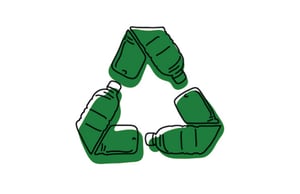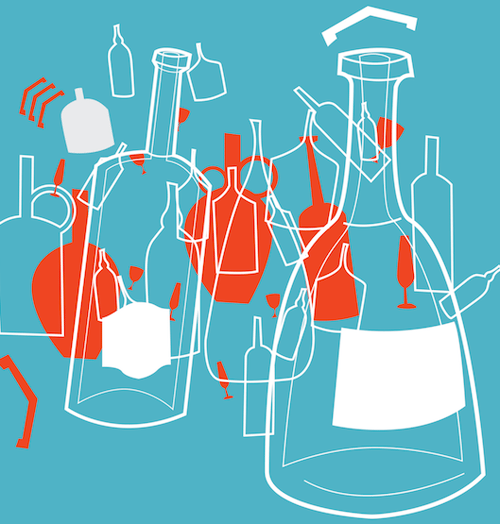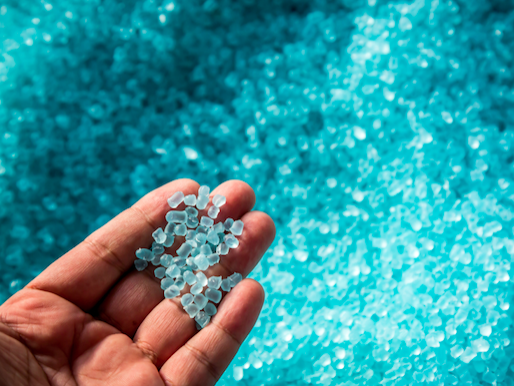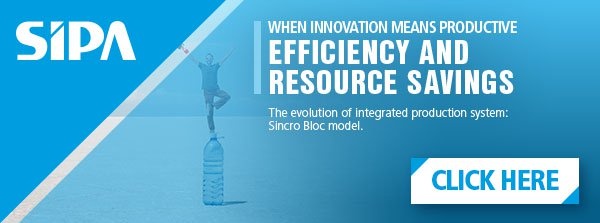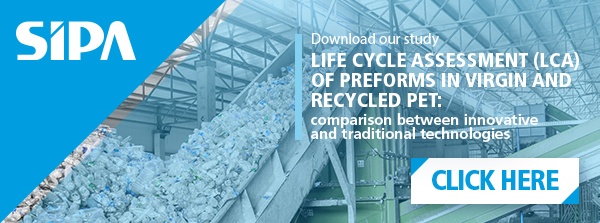The use of virgin rather than recycled plastic is of direct concern to packaging manufacturers, but one that has generic repercussions in terms of environmental sustainability.
At the base of the management and economic aspects there is the fragmentation that often characterises the entire recycling system, a structure that in many cases impedes economies of scale and the constant flow of high quality materials for those concerned with recycling.
Costs and consumption connected with plastic production
It takes around 900 litres of petrol, 180 cubic metres of water and 14,000 kilowatt hours of energy to produce a tonne of plastic.
On the other hand, a tonne of recycled plastic requires only 2 tonnes of used plastic, 1 cubic metre of water and 950 kilowatt hours of energy.
Within this overall context the volatility of market prices come into play.
Between 2012 and 2015 for example, there was a decrease in the price of many types of plastic and that for PET in particular with the price of recycled plastic falling by 30 – 40%.
PET recycled products: nature of plastic based on eco-design
Recycling a PET bottle keeps it out of the landfill, but it does much more than that.
Recycled PET resin is a valuable manufacturing feedstock that can be reprocessed and reused in bottles over and over again.
Recycling instead of landfilling, then using that reprocessed PET material as a raw material for new products, greatly reduces the greenhouse gas and carbon emissions impact and requires less overall energy to produce the new product.
Over 1.4 billion pounds of clean recycled PET went back into the production of new products—such as those pictured above—in the U.S. and Canada, about three times what was used 10 years ago.
An important aspect is linked to design of packaging of edible oil. In fact the design of the containers has a direct and significant impact on the costs of collection, selection and recycling.
The choice of materials, colours, format and other design-related components determines if a specific type of packaging will have a post-consumption value if recycled (and how much), or if it will bring additional disposal costs.
Non-recyclable packaging brings an additional net cost that can even reach 300-350 dollars per tonne collected compared to packaging that is easily recycled.
To offer just one example, opaque PET bottles have a low level of recyclability compared to transparent bottles.
READ ALSO: "PET recycling: features, colour of bottles made with post consumer PET"
Studies on the recycling capacity of plastic related to design
A study by APR (the Association of Plastic Recyclers) has analysed the different types of packaging.
The design choices for the packaging analysed by APR include the shape as well as the use of labels, handles, ink and direct printing, glue, closure and covering of closure and accessories (valves, pumps, triggers, etc.).
The study estimated that the use of shrink-wrap covering labels, or sleeves, on PET bottles costs around 44-88 dollars for every tonne of recycled PET and from 2- 4 cents for every 500 grammes of processed product.
Specific studies have shown that during selection and recycling there is a decrease of mixed plastic materials that can reach 15% depending on the design features including the format.
Packaging that is less than 400-700 millimetres in size (such as caps of various types and small containers such as probiotic vials) are generally incinerated as waste.
APR has stated that it intends to develop solutions to intercept and recycle this flow and to lower waste through design improvement.
These measures could bring economic benefits of 50-70 dollars per tonne of collected mixed plastic packaging.
There is a number of key overarching principles that are appropriate for all PET bottles.
These include:
- Design for ease of separation and removal of materials such as closures and labels from PET bottles to allow for ease and efficiency of recycling;
- Avoidance of using materials that are known to significantly contaminate and reduce quality of PET;
- Use of fewer packaging materials on PET bottles to allow for ease and efficiency of recycling.
The choice of the most suitable polymer
Polymer materials that are not often used for packaging are rarely recycled as the quantities are not sufficient to benefit from economies of scale in the selection and recycling phase.
These polymers may also obstruct the recycling of more commonly used polymers as is the case when PVC or PLA enter the recycling flow for PET.
READ ALSO: "PET BOTTLE FOR EDIBLE OIL"
PET recycled products: the use of pigments
Colouring plastics with pigments reduces the value of recycled materials up to 100-300 dollars per tonne.
The switch from the extensive use of packaging in dark or covering colours (such as those for PET with opacifer agent Titianium dioxide - TiO2) to transparent or lighter colours would have the opposite effect.
A number of manufacturers of detergents have chosen not to colour product containers made from high density polyethylene (HDPE) to maintain the post-consumption value of the material for as long as possible.
In addition, the elimination of carbon black pigments (used in 1.5%-2% of packaging by weight) would reduce the loss of these forms of packaging that are currently discarded in infra-red ray automatic selection plants.
The recovery of clear PET facilitates the creation of the highest value recyclate and typically allows for closed loop bottle-to-bottle recycling.
The use of colourants should be minimised as much as possible.
Translucent tints that are very light shades of blue or green are acceptable, as these colours alter the colour of recycled PET in a minor way and help to offset any yellowing that may occur during the recycling process. Strong tints for example mid to dark-blue, green and brown should be avoided whenever possible.
Where strong colours are contemplated for shelf appeal then consider using alternative methods like sleeves, however these must be easily separated from the bottle prior to any automatic sorting operations.
Tints are always preferable to opaque colours as they can become dispersed and do not cause haziness in recycled PET as opaque colours do. Black colour should be avoided where possible.
Very small amounts of black colourant can significantly discolour a stream of clear / light blue PET recyclate.
- Coloured PET waste has a lower monetary value than clear (typically 50% lower).
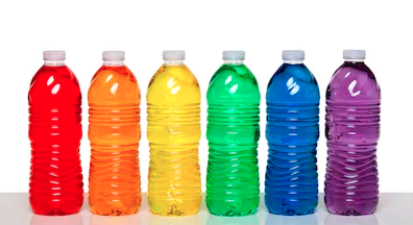
- The use of strongly pigmented bottles (black, white and colours) has a significant negative impact on the quality of recycled PET since presence of small amounts of coloured fragments can discolour recycled PET during extrusion.
- The presence of coloured PET also increases the losses of clear/light blue PET during flake sorting as for every coloured PET flake a clear PET flake is typically lost.
Fillers or masterbatch additives for example titanium dioxide, that can be used for opacity or for lowering the cost and polymer content of the plastic should be avoided or their use minimised.
Fillers can change the density of the plastic and can also contaminate the recycled PET stream and impact the clarity of the rPET resin.
PET recycled products: focus on additives
The design guidelines for recycling have shown that certain additives used in the packaging production have a detrimental effect on recycling processes.
The effects vary depending on the polymers.
They range from the discolouration of the recycled material to consequences for the density of the plastic material that translates into the inevitable loss of material in the recycling phase.
Conclusions
To prevent packaging design choices from having an ongoing negative impact on the recycling system it is vital that ongoing collaboration is created between the packaging designers at the top of the chain and the subjects post-consumption at the bottom.
